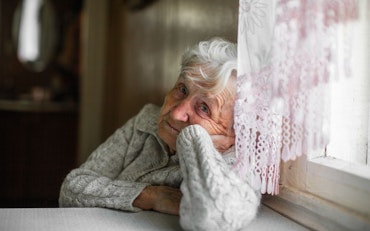Study shows size matters when it comes to the right kind of aged care
Exploring alternative models of aged care could offer better outcomes for both older Australians and aged care providers, according to new research to come out of one South Australian university.

A new study by Flinders University suggests that smaller, clustered domestic models of aged care may achieve better outcomes (Source: Shutterstock)
The research by Flinders University, published in the Medical Journal of Australia, suggests that smaller, clustered domestic models of aged care may achieve better quality of life and lower hospitalisation rates without increasing whole-of-system-costs.
Professor of Rehabilitation at Flinders University, Maria Crotty, led the study which compared the outcomes and costs of clustered domestic and standard Australian models of residential aged care in a retrospective analysis of linked health service data for the period of January 2015 to February 2016.
The study, which included 17 aged care facilities in four states, found that after adjusting for patient and facility-level factors, residents in clustered models of care had better quality of life, lower hospitalisation rates, and lower emergency department presentation rates than residents of standard care facilities, with unadjusted facility running costs staying similar for both models.
“In 2010-11, 54 percent of residential aged care facilities in major Australia cities had more than 60 residential places, and the average facility size is growing,” Professor Crotty and the other study authors say.
“However, it is increasingly recognised that the wellbeing of residents and their ability to live in a self-determined manner need to be maximised [and] ideally the residential aged care facility should feel more like a home than a health care facility.”
Professor Crotty and her study colleagues also suggest that differences in advanced care planning, out-of-hospital health care services or infrastructure and staffing models of the provider in clustered residential aged care facilities, might explain the lower hospitalisation rates.
“Hospitalisations are associated with poor outcomes for residents and higher costs to government,” they say.
“Increasing access to clustered domestic residential care could therefore both benefit residents and reduce government spending.”
The team conclude that their findings should be explored further in longitudinal, prospective cohort studies, and the association of individual features of clustered facilities with resource use and quality of life for residents examined.
They add that alternative financing models for supporting clustered domestic models of residential aged care should also be assessed.










